It’s A Dog’s Life
There is a phrase used by people who have little in their lives but their work and commitments at home, with little scope for fun. “It’s a dog’s life”, people will sometimes mutter when the stream of demands on their time simply will not stop. They mean that it is tiring, unrewarding and punishing. And yet, if you look at the average dog, their life seems pretty sweet in comparison. Think about this; would you swap places with your dog? Most of us would probably say “yes”.
However there is, it must be said, something in that well-worn phrase which chimes with the dog-owners among us. A dog, after all, is rarely given the freedom to do absolutely what it wants. If a human being had to lead a dog’s life, the chances are that we wouldn’t do all that well at it. As humans, we can go and get a snack when we feel like it, our toilet is convenient and hygienic, and we can ask for things and be instantly understood. For a dog, things are generally at the mercy of their owners.
When you are training your dog, then, it is wise to cut it some slack. As far as it is concerned, you are exhibiting some very strange behavior that it will not understand initially, and if it is slow to respond then this can be understood. It is not a stupid dog for getting things wrong. In fact, by paying attention to you it is being very obedient.
Check out more training tips here!
A Happy Dog Is A Well-Behaved Dog
In our society, there is a tendency to have a political response to most things. Many people are of the opinion that criminals transgress due to an unhappy home life or a poor upbringing. Comfort and discomfort are a major part of the influence that affects a person’s life, whether you are of the opinion that some people are “just bad” or otherwise. By the same token, dogs are liable to react to their circumstances, and it is well-known that a more content dog will behave in a more respectful manner.
When it comes to training a dog, you will get results if you motivate by fear. However, these results may not be satisfactory to you because although the dog will respond to commands, it will do so tentatively, conscious as it is of the fact that getting it wrong will lead to punishment. If a dog is trained in a happy atmosphere with an owner who is prone to reward good behavior, then it will react to the correct stimuli in the correct way. It will behave in a way which makes you feel proud, rather than simply satisfied.
If you have concerns about being too “soft” with your dog, simply remember that a dog will react in kind to the way it is treated. If you let it be lazy, then it will take the opportunity – simply because that is what it knows. If you encourage activity, however, it will reward you with the behavior that you want from it.
Check out more tips here!
You Reap What You Sow
Dogs in general have a tendency to follow their instincts and their influences. Canine behavior is something that has given countless experts reason to write countless books, and as far and wide as you go you are unlikely to find an expert who advocates an aggressive manner of dog training. The reason for this is that dogs absorb what they are taught very quickly, and behaving aggressively towards a dog will influence it to behave in an equally aggressive manner. Deep down in every dog, there is the instinct of a wolf – because that is what they have descended from.
Now, if you find a wolf in the wild and take an aggressive posture towards it, the wolf will not back down. It is likely to go for your throat and not stop until either you or it are incapacitated. Although domestic dogs have lost something of that instinct and ferocity, there is buried deep down a tendency to react with aggression when it is backed into a corner by an owner – if you strike a dog, it may back down. If you repeatedly strike it, it will react as any animal under threat – and it will hurt you.
Give a dog fun, exercise and affection and it will reciprocate in the most wonderful way. Its instinct is to form a bond with its owner and do anything it can to please them. Use this instinct to your advantage, and watch your dog blossom into someone you can be proud of, rather than a wolf with slightly blunted teeth and instincts.
Click to check out our Dog Training Blog!
The Secrets Of Potty Training
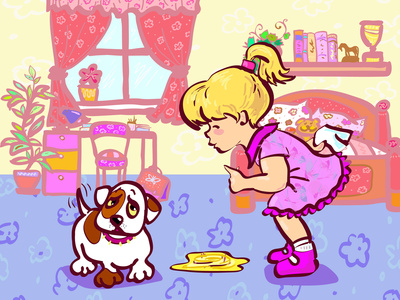 Many people who have brought a very young puppy to their homes know what great moments the family can cherish with such a toy-pet. But, in order for everything to be really perfect, you may need to learn a few things about potty training for your puppy. First of all, we need to mention that potty training for your puppy proves completely effective around six months of age. With very young dogs, you cannot expect control over bladder and bowels. Therefore the first tip to learn potty training for your puppy is to keep it off carpets into a special enclosed area.
Many people who have brought a very young puppy to their homes know what great moments the family can cherish with such a toy-pet. But, in order for everything to be really perfect, you may need to learn a few things about potty training for your puppy. First of all, we need to mention that potty training for your puppy proves completely effective around six months of age. With very young dogs, you cannot expect control over bladder and bowels. Therefore the first tip to learn potty training for your puppy is to keep it off carpets into a special enclosed area.
Then, potty training for your puppy requires that you make up your mind where you’re going to apply it: indoors, outdoors or both. The best idea is to teach your dog to let you know when it’s got an urge. Start potty training for your puppy by taking it in a leash to the corner you’ve prepared for it; do this after every meal, and you’ll drastically reduce the risk of ‘accidents’ on your floor. Another tip to use when potty training for your puppy is to try and feed it on dry dog food as this gives consistency to the stool.
What about the water you give it? Potty training for your puppy may prove a little difficult since young dogs need lots of liquid for their growing process. Leave a bowl with fresh water all day long for it to drink but remove it two hours before bedtime. This is part of the potty training for your puppy, as there will be less peeing over night. Taking the puppy out should be the first thing you do in the morning and the last one in the evening.
All the family members should be involved in potty training for your puppy, since no one can stay all day long around the house, making sure the puppy potties in the right place. Be patient with your pet as potty training for your puppy may be quite challenging, sometimes even the dog’s breed has a word to say in the receptiveness to training. If you don’t want to bother with potty training for your puppy, then you can buy an older dog that has already been potty trained. Or there is always the option of adopting an adult pet from the many rescue centers.
Check out these great training tools:
The Challenge Of Training An Aggressive Dog
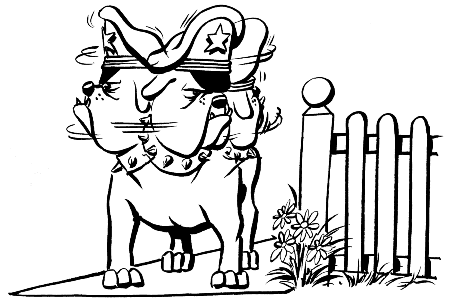 Dog aggressive behavior is among the most difficult to deal with by training. There is a large number of factors that lead to aggression problems; therefore the training of aggressive dogs is a challenge and a big responsibility at the same time. Before actually turning to some centre specialized in the training of the aggressive dogs, you should take the animal to the vet and see whether there is no injury or ailment that is causing pain, which may irritate the dog. On the other hand, training an aggressive dog in a special center doesn’t eliminate the entire problem.
Dog aggressive behavior is among the most difficult to deal with by training. There is a large number of factors that lead to aggression problems; therefore the training of aggressive dogs is a challenge and a big responsibility at the same time. Before actually turning to some centre specialized in the training of the aggressive dogs, you should take the animal to the vet and see whether there is no injury or ailment that is causing pain, which may irritate the dog. On the other hand, training an aggressive dog in a special center doesn’t eliminate the entire problem.
Before you should start training an aggressive dog, you need to identify the problem. Usually the cause is found in dominance, in the animal’s relationship with its “pack”, in your case, the family members. You may also be facing a fear aggression, meaning that your pet is negative towards other animals. The best training for such an aggressive dog emphasizes the reliability on the owner; a dog that trusts its master or mistress will limit the aggressive behavior. In the same category for the training of aggressive dogs fall the over-protective pets that regard the owner as personal territory.
The training of an aggressive dog attempts to solve the problem of a trauma that has been caused to the family members. And sometimes it is pretty difficult to learn to trust your pet again. Even if you have the word of a special consultant in the training of aggressive dogs, it will still take some time before you can stop being cautious. Therefore, the owner has to be an important part of the training of an aggressive dog, since progress can be witnessed gradually and trust regained without the danger of crawling back to one’s mind.
For professional assistance in the matter of training aggressive dogs you may rely on sites where you may learn the steps to develop healthy relationships with your pets. The importance of the owner’s presence during the training of an aggressive dog comes from the fact that dogs learn with associations. If for instance it is used to showing aggression when it is about the house with you, it will stick to this behavioral pattern. Consistency is the key word for the training of an aggressive dog, don’t repeat the same mistakes and don’t change your attitudes abruptly!
Check out these great training tools:
The Power Of Positive Dog Training
Everyone who wants to have a harmonious happy relationship with a dog should learn to apply the power of positive dog training. What exactly do we mean by the power of positive dog training? The answer shouldn’t be too complex though we can elaborate a lot on it: basically the power of positive dog training means the ability to develop skills and obedience in your dog while avoiding physical punishment. It is not yet sure whether the power of positive dog training could solve all kinds of behavior problems, but we are convinced that a lot more loving methods can be used in teaching obedience to an animal.
The power of positive dog training has gained prominence in recent years as people have reached the conclusion that forceful methods can sometimes do more bad than good. From a certain point of view, the power of positive dog training only implies a shift of attitude, a different approach to our four-legged companions. We should definitely start by changing our way of seeing them: dogs are not animals that will dominate you unless you show control first. The main aspect of the power of positive dog training is to see your pet as a creature that needs love and a good environment.
Since positive influences are so appealing to humans, why should it be the case for dogs too? They’re very tender animals that attach to the family and the environment, therefore, the power of positive dog training should work wonders on them. If you don’t know where to start, the reward type of training is a good way. The power of positive dog training is obvious in the rewards the animal receives when it performs a certain task. Sometimes, the dog may be more thrilled about the owner’s attention than by a toy for instance. Try the power of positive dog training for yourself and see what it is like.
Most animal centers now recognize and widely use the power of positive dog training, and of course people find it more appealing to take their pet to a place where it will be well taken care of. There are even books and guides on the power of positive dog training, tackling with all the methods enjoyed by both handlers and animals. If you choose to test the power of positive dog training on your own, have a look from time to time to the many sites providing useful tips online.
Check out these great training tools:
Puppy Training Tips
The big joy a puppy brings around the house may fade a little if you realize you’ve got to waste a lot of time cleaning after it. Therefore, start training the dog from day one; here are some puppy training tips you may find useful at the beginnings of a relationship with your new friend. Puppy training tips are a book subject and they are thoroughly covered by professional sites where you can find the first steps of teaching new things to your puppy. General puppy training tips apply to all breeds so don’t worry about this aspect, the only problem is that some dogs are more difficult to potty train than others.
The first puppy training tip is not to allow it to eliminate everywhere; you don’t need such kind of accidents when the dog becomes an adult. Yet, mention should be made that no puppy training tips are going to turn the pup into a reliable dog until it is at least six month old. Training only creates a good habit that requires constant reinforcement. There should be permanent access to the potty area. The puppy training tip here is to never allow your dog to eliminate on carpets, tiles or hardwood.
Then the next very important puppy training tip is to teach it how to love and respect you, and this has very much to do with learning self control. Just like with small children, puppy training tips insists that you don’t give in to every whim of your puppy; you are the leader and you set the rules. Up to a certain point, there is dominance, only then, we’re talking about respect and friendship. Beware, by respect we mean love and attention combined with discipline. Puppy training tips are not for bullying and terrorizing your pet.
Probably the top puppy training tip of all is to make your dog as sociable as possible. Dogs that develop fear are likely to show outward signs of aggression too, and this should be avoided at all costs. You can socialize the animal by inviting people to meet the pup. The puppy training tip is that the pet get friendly and accustomed to having strangers around the house. Seeing that guests are no threat to you and the house environment, lies at the basis of this puppy training tip. Keep it in mind and you won’t see your dog attacking anyone!
Check out these great training tools:
All The Help You Can Get To Train Your Dog
No-one is about to claim that training a dog is an easy thing to do. Dogs are animals with personalities, and whether or not those personalities are amenable to training, they will present different challenges with each different dog. It cannot be denied that some are easier to train than others, but no dog is untrainable. It is simply the case that some dogs need to be given more of a chance than others to pick up what their master wants them to learn. After all, humans are the same – if you got straight As in your freshman year of high school, congratulations, but you are in a minority.
So it makes sense that there is help that can be found to improve the behavior of a dog you are finding hard to train. As ordinary “civilians” when it comes to the overall behavioral patterns of a pet dog, it goes without saying that we will not magically have access to the “button” inside a dog’s mind that makes it behave well, perform tricks or anything else you want it to do. There are professionals who have written books and made DVDs showing helpful tips and hints, and a wealth of websites which do the same.
You may even take your dog to a trainer who will be able to identify ways to get it behaving the way you would like. The expense of doing this makes it something that you may not want to do too regularly, but if all else fails it can be beneficial to you and to your dog.
Click here to check out our Dog Training Blog.
Potty Training A Puppy
 Many owners take potty training a puppy as the most important thing to teach a doggie, so that there is no discomfort around the house. What most people don’t know is that when it comes to potty training a puppy, there are various differences between breeds, some being easier to train than others. So, if you haven’t made up your mind yet about which breed to choose, this aspect really needs to be taken into consideration. How difficult could potty training a puppy be? If you have the answer to this question, then you’re on the great way to a wonderful friendship.
Many owners take potty training a puppy as the most important thing to teach a doggie, so that there is no discomfort around the house. What most people don’t know is that when it comes to potty training a puppy, there are various differences between breeds, some being easier to train than others. So, if you haven’t made up your mind yet about which breed to choose, this aspect really needs to be taken into consideration. How difficult could potty training a puppy be? If you have the answer to this question, then you’re on the great way to a wonderful friendship.
When you’re potty training a puppy, you have to be reasonable with the very young ones. They simply have very little control of their bladders and bowels, so as soon as they realize they have to go, it is almost always too late to hold it. Therefore, potty training a puppy may be a patience exercise for you too, don’t get angry at it, since sometimes it is beyond control. Keep it off your carpets until you’re sure it is reliable. Now, let’s have a look at some basic tips for potty training a puppy. First of all, it is best to train the pup so as it works both indoors and outdoors.
The key to successful potty training a puppy is to take it to potty after every meal; make it a routine to take the pup out first thing in the morning and last thing at night. If you want to apply some general type of potty training for puppies, take the doggie on a leash to the spot you want it to use. After it potties, play with it for a while or offer it a reward so that the pup may grow up with a clear idea of what pleases you or not. Try to feed your puppy on dry food and at the same hour every day, this will give regularity to the animal’s bowel movements too.
Young animals need lots of water, so you may consider that when you’re potty training a puppy. Make sure it has a water bowl at day time, but take it away two hours at least before bedtime. This will allow you the chance of potty training the puppy more efficiently and also saves you the risk of nasty accidents over night. Make sure the spot where it potties is clean all the time, as dogs are very clean animals and they truly want to stay that way. For those of you who don’t feel like potty training a puppy the best solution is to buy an older dog that is trained for the matter.
Check out these training tools:
How To Train A Dog Quickly
Many dog owners are in search of a rapid answer to how to train a dog quickly. For such an urging necessity there are not too many answers, since by “quickly” we don’t mean hours or days but at least a couple of weeks. If you’re wondering how to train a dog quickly you probably also need to know that it is absolutely necessary to practice with the dog as much as possible for the skills to actually develop. Otherwise, training may prove highly ineffectively. Those who want to find out how to train a dog quickly should first turn to special training centers.
Daily intensive practice is the first rule when you learn how to train a dog quickly. For instance, you need to get the dog’s attention that is to establish eye contact with it. Use a piece of meat out of the dog’s reach, reward the animal only when it responds to the name or the stimulus and looks at you. If you really want to learn how to train a dog quickly, you need to set the rules and make the dog play by them all the time. You’ll have to spend constant periods of time together applying the newly-learned stuff.
Don’t insist if the dog shows signs of fatigue, there’s no need to exhaust the dog as learning under such circumstances is ineffective. It may even be detrimental to insist to train a dog quickly. Don’t forget that there are lots of guide books and videos on how to train a dog quickly, and they all mention the need to do everything in the most relaxed way possible, so that neither you nor the animal feel pressure of any kind. It should take at least a week before a skill is developed and only with continuous exercise it will become permanent.
The question how to train a dog quickly is no longer an issue, once you learn the best way to trigger correct responses from your pet. You can choose to train your dog at home or in a special center, but whichever be the approach, you’ll have to be an active part involved. Have fun!
Check out these great training tools:
Free Dog Training Tips
The Internet is the best and probably the most comprehensive source of information in the world; so, if you’re looking for free dog training tips to improve the relationship with your four-legged friend, run a simple search and see what you can find out. If you’re wondering about the reliability of the free dog training tips online, there is one way to get convinced, try them and see if there is noticeable progress in your dog’s behavioral patterns. If the Internet doesn’t suit your purposes, a friend who is also a dog owner may fill you in on some free dog training tips.
It is known fact that the greatest disadvantage about applying free dog training tips is that owners often don’t have enough time to devote to their pet. However, you can practice for instance the “sit” command together with other free dog training tips at any moment; you don’t need special preparation for that. You may even turn your attention to the dog during a commercial break for instance, or when playing “fetch”. Before throwing the ball, you can apply a simple free dog training tip or command: “sit” or “down” and continue with the game after the dog obeys it.
Many free dog training tips will help you teach your dog target focus: the simplest form of the kind is paw or touch. You actually get the animal focus on a specific area and then perform a certain action afterwards. Such free dog training tips are used in competitions as well as in daily life, when you want for instance to turn the pet’s attention from you. Moving and finding a specific place are forms of targeting and they are considered to be the first step towards retrieving. Free dog training tips applied for the matter will make you improve the relationship with the pet, it will move away from the couch for instance.
People who actually apply free dog training tips find it very entertaining for both parts involved; keep in mind that the first to benefit is your pet. By sticking to some free dog training tips not only will you save money, but you’ll also avoid specific mistakes that dog owners make, thus ruining their chances of ever growing an obedient animal.
Check out these great training tools:
What’s The Best Dog Training Trick?
There are hundreds of dog training tricks, some are just basic commands, and others represent complex exercises. No matter what dog training tricks you intend to teach your dog, remember that the learning place mustn’t have any distracting element that could get the dog’s attention. Any exercise must contain many rewards as raising your voice won’t make the dog understand what you want, it will just get scared. Also remember that dog training tricks require a longer time interval to be taught, as too fast learning is almost impossible for any animal. Don’t leave your dog lose interest; simply stop when you feel tired or frustrated because the teaching process is too slow.
One of the best dog training tricks that everybody knows is the “Hello”, most of the audience will be impressed when your dog presents the paw. This is one of the first dog training tricks you can teach your pet. The following steps will help the pet learn further dog training tricks: make your dog sit in front of you, lift its paw gently and shake it easily, when you shake its paw reward it somehow. Repeat this dog training trick procedure constantly and don’t let it go unnoticed no matter the results. After the dog has learned to raise the paw when you stretch your hand in front, start repeating the word “Hello” each time the dog presents its paw. Though it is a simple dog training trick it always brings a smile on the face of any visitor and especially children, they will simply love it instantly.
Another dog training trick is the “Carry” command; it is both funny and useful. Most dogs love carrying bags and though it might look like a difficult to teach dog training trick it is not. The learning process consists of three steps. First, the dog will get used to “Hold” things and not the ones it likes but any object. Each time it takes the object from your hand reward it. After it got used with this command try the “Release” order and give it a reward each time it drops the object in your hands. The last step of this dog training trick consists of teaching the dog to effectively carry a bag; this is simply learned by commanding the dog to hold an object while moving several steps. Call it and when it’s near you give the “Release” command.
Check out these great training tools:
Dog Training Videos
Dog training is the oldest and probably the most common solution to bridge the understanding gap between people and dogs as their best friends. There are plenty of solutions to help dog owners train their animals, and one of the most popular is the dog training video. Sold online or in special pet stores, dog training videos provide comprehensive techniques and tricks that can turn the most disobedient of animals into an obedience example. People often prefer dog training videos to individual trainers for a variety of reasons.
First of all, there is the money issue; dog training videos are a lot cheaper than special training classes. Furthermore, many dog owners want to be actively involved in the training process; thus, with the help of a dog training video they can exploit the two sides of the experience: the fun part and the practical one. When you’ve got a puppy, it is all the more rewarding for you to be the one to train it how to target focus or fetch and retrieve. Dog training videos come with very professional solutions that can be put to practice by people who don’t have a clue on the subject.
The lessons presented by dog training videos are gradual and take you step by step to achieve the behavior patterns you want for your pet. It is a good idea that you watch every training stage on the dog training video, several times. Then you have to put into practice with your dog. Of course results appear in time, but make sure you are persistent in exercises; skills must be used, otherwise they’re wasted. Some other member of the family may get involved too, watch the dog training video together and exchange opinions. However, only one trainer should work with the dog at a time, in order not to create confusion.
Keep in mind that all the tips presented on a dog training video need to be integrated in the special context of your house. Avoid giving your pet conflicting orders and don’t use too complex linguistic structure. As you’ll learn from any dog training video, short words like ‘sit’ or ‘down’ are most effective, not to mention that the dog is receptive first and foremost to the voice pitch. Therefore, you don’t need a dog training video to tell you that animals are susceptible to raised voice for instance and they become defensive. Good luck!
Check out these training tools:
How To Choose A Dog Training School
Who wouldn’t like to have a most obedient pet around the house, you could take it everywhere or leave it at home with someone else without worrying it wouldn’t listen. This is when dog training obedience schools come into play, as they can work a complete and essential change on your animal. After taking your pet to a dog training obedience school you will no longer come back home from work to find chewed shoes and toilet paper. Plus, there is plenty of online assistance to help people sign their pets in at dog training obedience schools.
There are other severe cases when people take their dogs outside just late in the evening or at night when the chances to meet people or other animals are minimal. Dog training obedience schools are a great opportunity to turn back to a most enjoyable life style for you and your four-legged friend. Many pet owners find choosing a dog training obedience school similar to deciding on a child’s education. Do a bit of investigation, as you will be part of the program too in order to learn to establish contact with the animal.
Let’s see the necessary criteria for you to find the best dog training obedience school. Recommendations make first-hand information; a work colleague, a neighbor or a friend may suggest the services of a specific dog training obedience school. Maybe some of the tips available on a site will help you make up your mind. Go have a look at the dog training obedience school campus, check the surrounding, talk to trainers and get familiar to the overall atmosphere of the place. Keep in mind that for maximum results your pet needs to be happy at the dog training obedience school.
Last but not least, it is highly important that both you and your pet feel at ease with the trainer at the dog training obedience school, otherwise the efforts may be a waste of time and money. Dog training obedience schools don’t target very young animals, though it is known that the younger the dog, the easier the adaptation process. Yet, this is not a rule, maybe you’ve recently adopted a dog and you need the support of a professional dog training obedience school to help you socialize the animal. With gentleness, lots of love and patience, chances of success go as high as 99%, so, no need to worry!
Check out these great training tools:
Puppy House Training
 Taking a puppy to your home is a big responsibility since you have to meet all the animal’s health needs and provide a loving environment. In the first month of accommodation, that may also be the first in your pet’s life, puppy house training is essential. What does puppy house training imply? First of all, as you may expect to potty train it, then you have to make sure it socializes well and is perfectly safe to leave alone in the house. This means puppy house training prevents any form of disruptive behavior and separation anxiety.
Taking a puppy to your home is a big responsibility since you have to meet all the animal’s health needs and provide a loving environment. In the first month of accommodation, that may also be the first in your pet’s life, puppy house training is essential. What does puppy house training imply? First of all, as you may expect to potty train it, then you have to make sure it socializes well and is perfectly safe to leave alone in the house. This means puppy house training prevents any form of disruptive behavior and separation anxiety.
Puppy house training will teach your dog that it has to be alone from time to time. How can you avoid any nasty behavior in your absence? At the beginning of puppy house training that shouldn’t be too difficult at all. You may leave the dog in an isolated area of the house, in some sort of confinement. Don’t feel sorry for the pup as it will spend most of the time sleeping. Later when you continue puppy house training again, so make sure the dog has something to do when you leave for work, like playing with a toy or eating.
Frequent walks, particularly after meals are also an essential part of the puppy house training. Taking the pet in areas where it can come into contact with other people and even dogs is a good idea for the development of social behavior. Dog owners who don’t make time to take care of the puppy house training are very likely to have an unsocial friend with unexpected reactions. Sooner or later they would have to ask for the help of a professional trainer or would even give up the dog.
Last but not least, puppy house training is part of the family program. The training part is not limited to one family member, since the dog has to learn to obey commands in a general manner. For instance the “sit” and “down” orders are basic and puppy house training can use them when the animal is at least several months old. With very young dogs, puppy house training is somehow restricted to the potty and the food routine. This is also the time to shower lots of love on your friend and prove how important it is to the family. Positive puppy house training is probably the most effective methods of our time, so have a go!
Check out these great training tools:
Dog Training At Home
When we talk about dog training at home we think of the rewarding feeling of being able to develop an animal’s skills, but there is a lot of work and effort involved in the process too. Dog training at home begins with potty training and continues with complex tasks and commands. However, before you start dog training at home you’ll have to find some professional information on dog health and care. The very basic “sit” and “hello” are among the first tricks of dog training at home, followed by the leash walk as an essential part of the process of dog socializing.
Many pet owners choose to turn to professional videos that teach them dog training at home. There are usually two types of approaches to dog training at home and in general: the collar treatment and the reward-based program. Studies conducted in recent years have shown that dog training at home by using very positive methods is likely to create social and highly reliable animals, that not only will listen to your commands but will always been on guard when it comes to the safety of your family. Dog training at home may not have the professional background but it surely has an emotional touch.
Once you start dog training at home don’t limit to teaching the dog how to raise the paw or sit when ordered. You can take dog training at home a little further and show the animal how to play “fetch”. It begins by using one of the pet’s favorite toys, but it has to result in the animal’s ability to bring any object. No matter the purpose of dog training at home, keep in mind that reward is the magic key to get to your dog’s mind. Every time it performs an action, the dog will need encouragement to continue; therefore an affectionate moment is welcome and appreciated as much as some goodie treat.
Dog training at home takes a lot of time and energy, and many people find it a true challenge. However, time should not be a problem as long as you can turn to your animal and lavish a little attention on it. You can even practice fetch during a commercial just like any other commands learned during dog training at home. If you don’t want to have your dog on the sofa with you, you can always order it to move, and the animal would respond. This is the very practical side of dog training at home. By all means avoid bullying the dog or raising your voice, as such manifestations develop aggression or fear.
Check out these great training tools:
Dog Obedience Training
For a solid and trustful relationship between dog and owner, a common language needs to be created. This can only be achieved by dog obedience training that opens the way to learning and understanding your pet and its needs. By dog obedience training you make sure that the animal always responds in a positive ways to your commands without losing calm and developing unsocial behavior. Exercises will help your pet create the best responses to stimuli and therefore, dog obedience training works for the benefit of both animal and adoptive family. Specific centres meet the requirements of dog owners who seek professional help in training their dogs.
There are several types of dog obedience training; let’s have a look at the very basic ones. The most common and easy to put into practice are the reward-based and the leash training types. The latter is considered to belong to the traditional dog obedience training used at first in military facilities. For such practical purposes, the leash dog obedience training has more advantages than the food reward, since it finds better adaptation to the task or mission the animal has to face. The collars bring mild or even hard correction, yet, make sure that you don’t use it ineffectively.
The leash dog obedience training teaches the animal to obey to collar control. You will need to remember that the leash is just the first step into developing the skills to get the dog obey under no matter what circumstances and relying on other tools as well. This type of dog obedience training establishes the hierarchy or the leadership in the dog’s life and the relation you develop with the dog very much depends on this aspect. Now, let’s see how the reward dog obedience training system works. Commands given to the animal and properly executed are rewarded.
Thus, the pet associates a specific positive behavior with certain rewards, caresses, a toy or usually food. Behavior patterns develop along these lines as dog obedience training pursues a mutual understanding between pet and owner. Basically teaching a trick means achieving a dog obedience training goal, lots of skills may be developed according to the matter: scent detection, fetch commands and even criminal apprehension. You may hire a professional in dog obedience training, but you have to be an active part in the process since you are the one to spend most time with the pet.
Check out these great training tools:
Dog Behavior Training
Dog behavior training is more than making your dog all obedient and safe to leave home alone, process is to complex to reduce it to this. Since dog owners have to be an active part involved in dog behavior training, they come to learn and discover the unexpressed sides of their pets. In a nut shell, dog behavior training is about getting an obedient animal around the house while also getting more familiar with the needs and expectations of a close friend that doesn’t speak the same language. You should be ready to learn about the drives behind your dog’s behavior.
The drives or instincts that make your animal react in a certain way to specific stimuli are the main focus of dog behavior training. The explanation for low sociability may be rooted in the animal’s genes or in its close environment, once you get to manipulate these drives by dog behavior training, spectacular changes are not short to appear. Therefore special institutions and centers that provide assistance for dog behavior training have a scientific background of tests and studies about the nature and flexibility of the canine drives.
Probably the most significant part of dog training behavior lies in understanding the way you can encourage or discourage certain drives, and the skills of a trainer are best reflected here. The main instincts that are targeted by dog behavior training are: prey, play, pack, defense and food. The order is not relevant for their importance, since each plays an important part in the dog’s life determining the relationships with their masters and with other dogs. However, mention should be made that the domination of a certain instinct varies from one breed to another, and dog behavior training also tackles with breed specificity in the context.
Many people are surprised to learn that dog behavior training implies teaching the animal how to play. This special drive seems to be the one that is not inherent to the genetic structure of your pet. In order to learn how to jump and wrestle it is essential that the owners help the puppy acquire the skills, normally they would be the responsibility of the mother and the brothers as its true pack, but in their absence, you need to do it. The educational side is an essential part of dog behavior training, since it actually shapes the future relationship you develop with your pet in the future.
Check out these helpful tools:
Beyond Basic Dog Training
Obedience instruction has become more accessible to common people with the publication of the Diane Bauman’s guide Beyond Basic Dog Training. This book is a door open towards the secrets of an entire training philosophy, and it has been successfully used even for the preparation for canine competitions. Beyond Basic Dog Training helps you understand the principles and patterns on which dogs learn, which is in fact a dual system of trial and error. With Beyond Basic Dog Training you will learn to apply corrections in a positive way, teaching your canine friend not to fear failure.
As Diane Bauman proves in Beyond Basic Dog Training, for a successful program you have to understand that from the two elements involved in the equation, both are thinking. There is the “thinking handler” in charge of the “thinking dog”, so don’t ignore you’re pet’s “feelings”, on the contrary stick to an effective development of the communication level. With Beyond Basic Dog Training you will come to achieve more than obedient behavioral patterns, you will understand your dog and learn to respect and listen to its needs. We’re talking about security, trust and confidence and lots of fun too.
With a guide such as Beyond Basic Dog Training you can have fun entertaining classes with your dog in the comfort of your backyard. At least you’re 100% sure of the methods used, since you are in perfect trust. With Beyond Basic Dog Training you’ll turn your dog into a great companion; therefore it is very good for puppies to benefit from a fast and very humane way of teaching. It is perhaps the time now to answer a simple question: why would anyone go beyond basic dog training? Simple methods will only leave the training process at a minimal level exploiting the specific animal drives as much as possible.
Going beyond basic dog training, means getting to understand the more complex structures that make your dog what it really is; you come to appreciate a wagging tail more than you would have done before. Books such as Beyond Basic Dog Training may prove to be the right choice and the best source of information for strengthening man-animal friendship. Being able to see your dog succeed in performing complex tasks is the reward of every owner and amateur trainer. May all your efforts be fruitful!

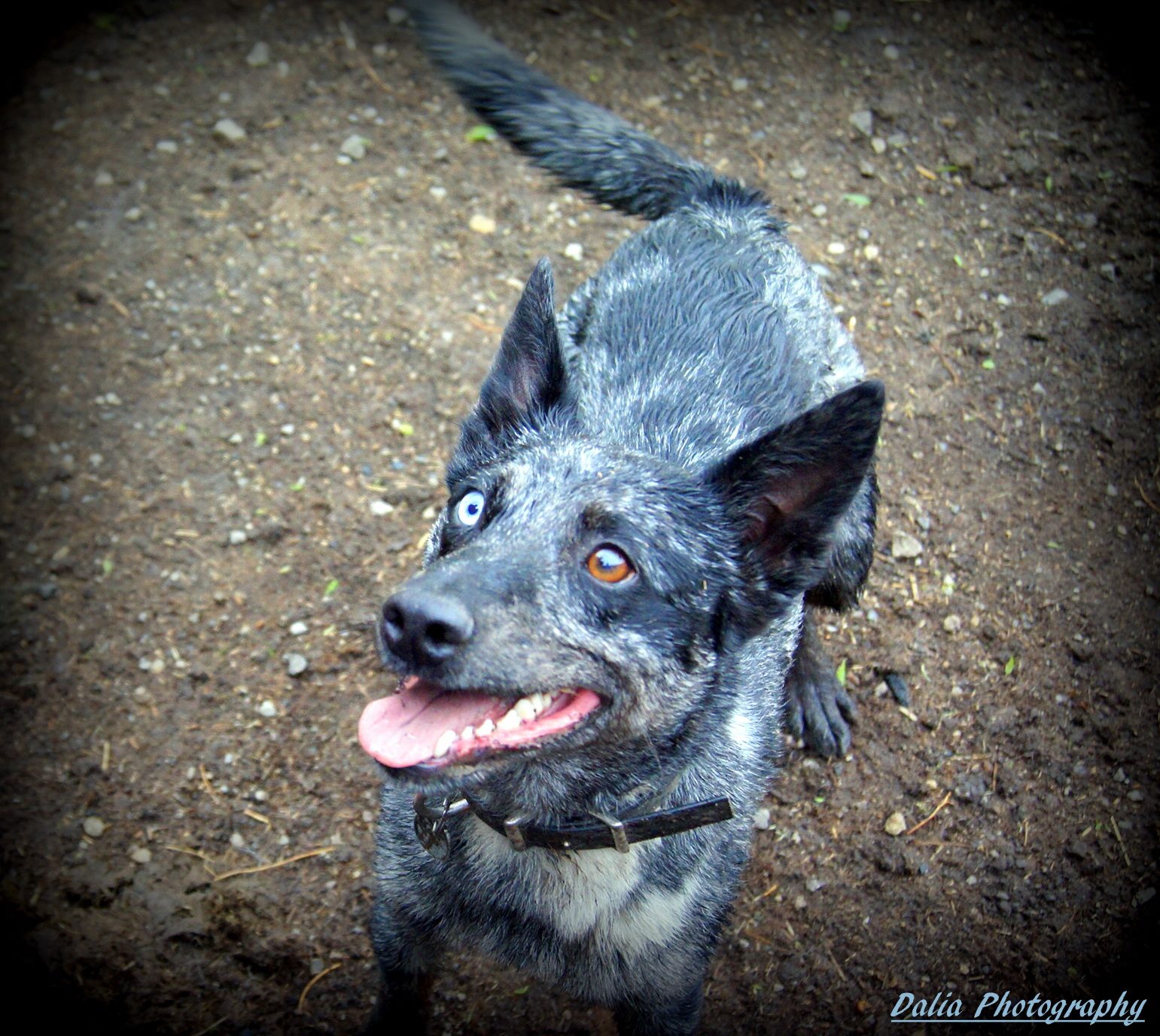
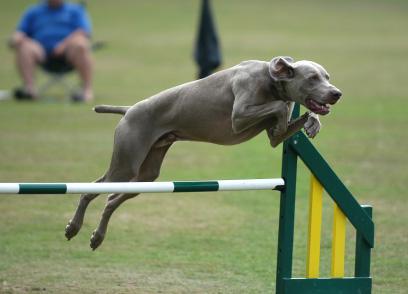
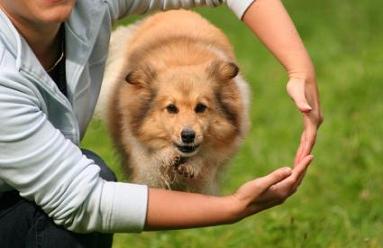
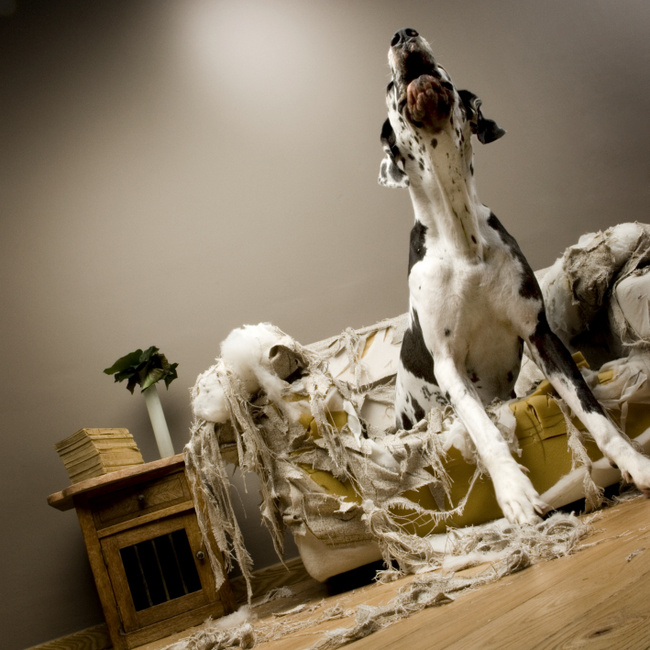
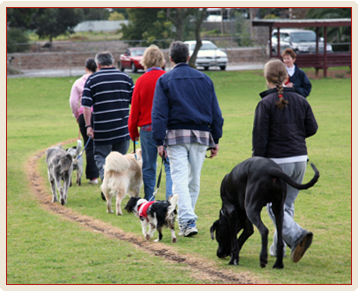
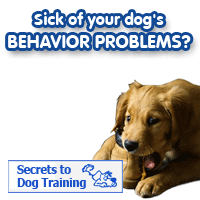


Recent Comments